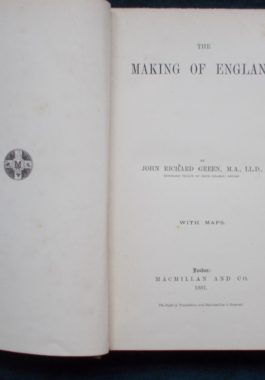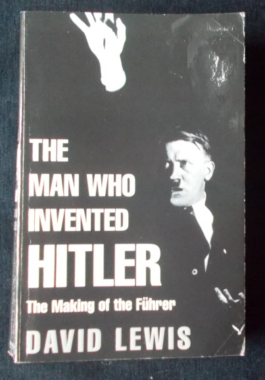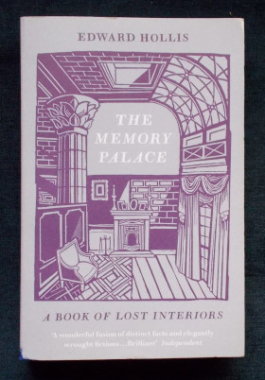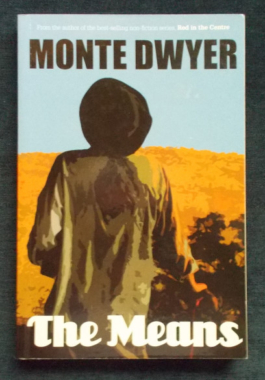- Sorry, this product is unavailable.
-

 A fabulously in-depth work by a highly esteemed historian, this history covers England's epic, colourful history from the conquest of the Saxons, A.D. 449 up to 829, when Ecgberht unites England under one ruler. So much is covered: the original independent kingdoms, Romanisation, topography and geography, the many roles that Christianity played in politics, Church and customs and much more. With illustrated maps.
A fabulously in-depth work by a highly esteemed historian, this history covers England's epic, colourful history from the conquest of the Saxons, A.D. 449 up to 829, when Ecgberht unites England under one ruler. So much is covered: the original independent kingdoms, Romanisation, topography and geography, the many roles that Christianity played in politics, Church and customs and much more. With illustrated maps. -
 The mystery of the Man behind the Iron Mask has intrigued people for over 250 years, inspiring as much fantasy as serious conjecture. This is the story of the story, so to speak; an account of the theories and counter-theories, from the claim that he was the twin brother of Louis XIV to the recognition that he was Eustache Dauger, with diversion by way of such candidates as the Duke of Monmouth, Richard Cromwell, Molière, Nicholas Fouquet, an Armenian archbishop, an Italian astrologer and many more. Complete and comprehensive, this is a presentation of all the known facts of the prisoner's existence chronologically, as they have been discovered, together with all the myths as they have flourished from the preposterous stories put about by his gaoler in 1669 to the alleged discovery of his skeleton in a tower in Cannes in 1977. As the various stories are revealed, the reader may accept or reject the assorted evidence and develop his own views before the author presents his own conclusions. Illustrated.
The mystery of the Man behind the Iron Mask has intrigued people for over 250 years, inspiring as much fantasy as serious conjecture. This is the story of the story, so to speak; an account of the theories and counter-theories, from the claim that he was the twin brother of Louis XIV to the recognition that he was Eustache Dauger, with diversion by way of such candidates as the Duke of Monmouth, Richard Cromwell, Molière, Nicholas Fouquet, an Armenian archbishop, an Italian astrologer and many more. Complete and comprehensive, this is a presentation of all the known facts of the prisoner's existence chronologically, as they have been discovered, together with all the myths as they have flourished from the preposterous stories put about by his gaoler in 1669 to the alleged discovery of his skeleton in a tower in Cannes in 1977. As the various stories are revealed, the reader may accept or reject the assorted evidence and develop his own views before the author presents his own conclusions. Illustrated. -
While Kylie Tennant was living in the little fishing town of Laurieton on the north coast of New South Wales, she made two memorable discoveries - Ernie Metcalfe and Diamond Head. The two belonged together. Called by some 'the mad hermit of Diamond Head', Ernie was splendidly sane, if unlike anybody else. Kylie Tennant has painted his portrait vividly and with love, and with it the portrait of Diamond Head - a place to which Ernie was so closely bound in spirit that in the end they seemed to be one. She evokes its fascination and its subtle menace, its rocks and beaches, its wildflowers and wild creatures, the light on sea and land, so that the reader, too, falls under its spell and shares her grief and anger at its later devastation by mining.
-
 Adolf Hitler emerged from World War I temporarily blinded from a gas attack, never having risen beyond the rank of lance corporal and showing no sings of the leadership that would make him feared throughout the world. Yet within months of the Armistice, he had begun building the Nazi Party with himself as its unassailable personification, the Führer. How did this change come about? The author reveals why Hitler was sent to a psychiatric hospital for treatment for his 'blindness'; how the doctor who treated him, Edmund Forster, deceived his unusual patient and dramatically changed Hitler's personality; and how the man who unintentionally created a monster was finally destroyed by him. Illustrated with black and white photographs,
Adolf Hitler emerged from World War I temporarily blinded from a gas attack, never having risen beyond the rank of lance corporal and showing no sings of the leadership that would make him feared throughout the world. Yet within months of the Armistice, he had begun building the Nazi Party with himself as its unassailable personification, the Führer. How did this change come about? The author reveals why Hitler was sent to a psychiatric hospital for treatment for his 'blindness'; how the doctor who treated him, Edmund Forster, deceived his unusual patient and dramatically changed Hitler's personality; and how the man who unintentionally created a monster was finally destroyed by him. Illustrated with black and white photographs, -
 Sidney Poitier, KBE (1927 - 2022) was the first black actor to win the Academy Award for best actor for his outstanding performance in Lilies Of The Field. His landmark films include The Defiant Ones, A Patch Of Blue, Guess Who's Coming To Dinner and To Sir, With Love. His body of work is arguably the most morally significant in cinematic history, and the power and influence of that work are indicative of the character of the man behind these many storied roles. He explored these elements of character and personal values to take his own measure - as a man, as a husband, and father, and as an actor. He was uncompromising as he pursued a personal and public life that would honor his upbringing and the invaluable legacy of his parents. Committed to the notion that what one does for a living articulates who one is, Poitier played only forceful and affecting characters who said something positive, useful and lasting about the human condition. This is Poitier's own introspective look at what informed his performances and his life, exploring the nature of sacrifice and commitment, pride and humility, rage and forgiveness and paying the price for artistic integrity. What emerges is a picture of a man seeking truth, passion, and balance in the face of limits - his limits and those of the world. Illustrated with black and white photographs.
Sidney Poitier, KBE (1927 - 2022) was the first black actor to win the Academy Award for best actor for his outstanding performance in Lilies Of The Field. His landmark films include The Defiant Ones, A Patch Of Blue, Guess Who's Coming To Dinner and To Sir, With Love. His body of work is arguably the most morally significant in cinematic history, and the power and influence of that work are indicative of the character of the man behind these many storied roles. He explored these elements of character and personal values to take his own measure - as a man, as a husband, and father, and as an actor. He was uncompromising as he pursued a personal and public life that would honor his upbringing and the invaluable legacy of his parents. Committed to the notion that what one does for a living articulates who one is, Poitier played only forceful and affecting characters who said something positive, useful and lasting about the human condition. This is Poitier's own introspective look at what informed his performances and his life, exploring the nature of sacrifice and commitment, pride and humility, rage and forgiveness and paying the price for artistic integrity. What emerges is a picture of a man seeking truth, passion, and balance in the face of limits - his limits and those of the world. Illustrated with black and white photographs. -
 The rooms we live in are always more than just four walls. As we decorate these spaces and fill them with objects and friends, they shape our lives and become the backdrop to our sense of self. One day, the houses will be gone, but even then, traces of the stories and the memories they contained will remain. Edward Hollis takes us to the sites of five great spaces now lost to history and pieces together the fragments he finds there to re-create their vanished chambers. From Rome’s Palatine to the old Palace of Westminster and the Petit Trianon at Versailles and from the sets of the MGM studios in Hollywood to the pavilions of the Crystal Palace and his own grandmother’s sitting room, this is a treasure trove of forgotten places and the people who, for a short time, made them their home.
The rooms we live in are always more than just four walls. As we decorate these spaces and fill them with objects and friends, they shape our lives and become the backdrop to our sense of self. One day, the houses will be gone, but even then, traces of the stories and the memories they contained will remain. Edward Hollis takes us to the sites of five great spaces now lost to history and pieces together the fragments he finds there to re-create their vanished chambers. From Rome’s Palatine to the old Palace of Westminster and the Petit Trianon at Versailles and from the sets of the MGM studios in Hollywood to the pavilions of the Crystal Palace and his own grandmother’s sitting room, this is a treasure trove of forgotten places and the people who, for a short time, made them their home. -
 Even if the six daughters of the charming, eccentric David, Lord Redesdale and his wife Sydney - born between 1904 and 1920 - had been quite ordinary, they were born into one of the most traumatic centuries of British history. The status to which they were born would have made interesting reading on its own, but Nancy, Pamela, Diana, Unity, Decca and Debo - known as the mad, mad Mitfords - were far from ordinary. The true story behind the gaiety and frivolity of the six Mitford daughters is as sensational as a novel. Nancy: her bright social existence masked a doomed obsessional love, which soured her success; Pam: a countrywoman married to one of the finest brains in Europe; Diana: an iconic beauty, married, and at 22, fell in love with Oswald Moseley, leader of the British fascists; Unity: she was romantically in love with Hitler and became a member of his inner circle before shooting herself in the temple when World War II was declared; Jessica: the family rebel, who declared herself a Communist in the schoolroom; and Debo: she became the Duchess of Devonshire. The author was given exclusive access to the Mitford archives. Illustrated with black and white photographs.
Even if the six daughters of the charming, eccentric David, Lord Redesdale and his wife Sydney - born between 1904 and 1920 - had been quite ordinary, they were born into one of the most traumatic centuries of British history. The status to which they were born would have made interesting reading on its own, but Nancy, Pamela, Diana, Unity, Decca and Debo - known as the mad, mad Mitfords - were far from ordinary. The true story behind the gaiety and frivolity of the six Mitford daughters is as sensational as a novel. Nancy: her bright social existence masked a doomed obsessional love, which soured her success; Pam: a countrywoman married to one of the finest brains in Europe; Diana: an iconic beauty, married, and at 22, fell in love with Oswald Moseley, leader of the British fascists; Unity: she was romantically in love with Hitler and became a member of his inner circle before shooting herself in the temple when World War II was declared; Jessica: the family rebel, who declared herself a Communist in the schoolroom; and Debo: she became the Duchess of Devonshire. The author was given exclusive access to the Mitford archives. Illustrated with black and white photographs. -
 Three centuries ago, most wealth was stored and exchanged as gold and silver coins. At the beginning of the eighteenth century, John Law stepped onto the world's stage: striking, charismatic and a mathematical genius. He developed the idea that if money were lent in the form of paper, properly backed up by proper assets, then the same money could be lent several times over. Despite opposition, he won royal backing to set up the first French bank to issue paper currency. Epic drama followed as he turned the financial world topsy turvy. A philanderer, a gambler and a murderer - the man who gave us paper money.
Three centuries ago, most wealth was stored and exchanged as gold and silver coins. At the beginning of the eighteenth century, John Law stepped onto the world's stage: striking, charismatic and a mathematical genius. He developed the idea that if money were lent in the form of paper, properly backed up by proper assets, then the same money could be lent several times over. Despite opposition, he won royal backing to set up the first French bank to issue paper currency. Epic drama followed as he turned the financial world topsy turvy. A philanderer, a gambler and a murderer - the man who gave us paper money.




